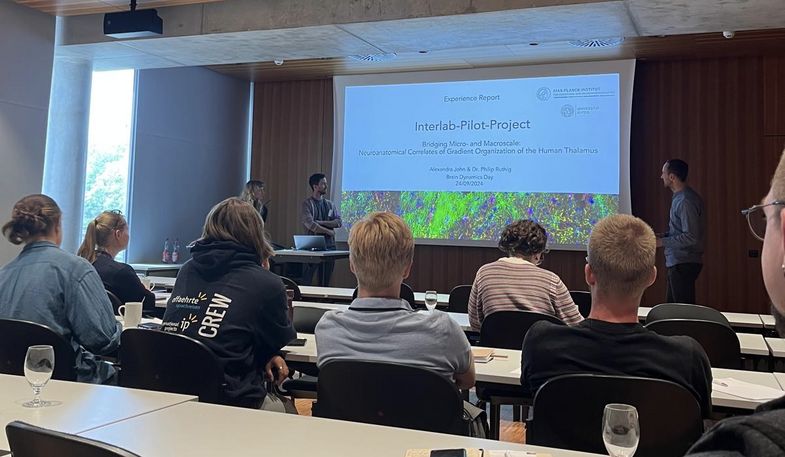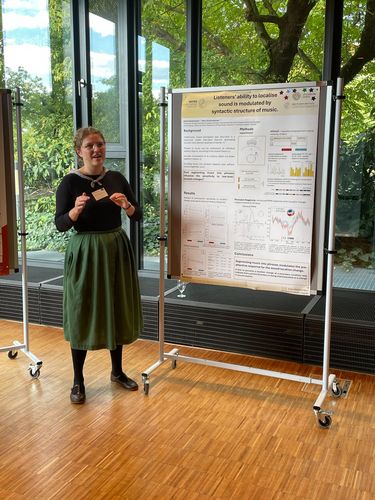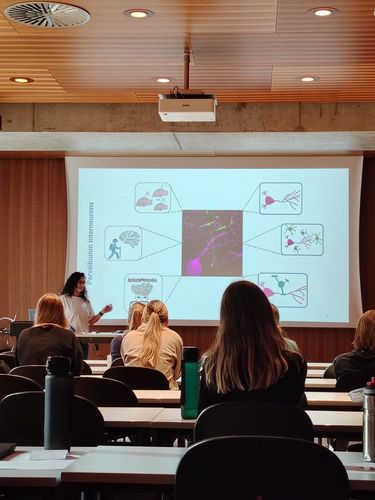The third annual meeting of doctoral students, postdocs and principal investigators from all areas of neuroscience and psychology took place in the Centre for Biotechnology and Biomedicine (BBZ) on September 24th. More than 60 participants from the faculties of Life Sciences, Medicine and Veterinary Medicine, as well as from the Helmholtz Institute for Metabolic, Obesity and Vascular Research (HI-MAG) and from the Max Planck Institute for Human Cognitive and Brain Sciences met and discussed the latest projects and results.
The opening keynote lecture by Prof Dr Dr Dr Zoltan Nusser gave an in-depth overview of complex processes regulating synaptic transmission in the cerebellum and hippocampus. Using high-resolution immunolocalization and pharmacological experiments, Prof Nusser proved that multiple presynaptic mechanisms underlie distinct presynaptic release properties. We then focused on oral and poster presentations by doctoral students and postdocs. Two poster sessions were organized, where each poster presenter had a dedicated time slot for a short presentation. After the second poster session, Brain Dynamics members cast their votes for the best poster. Between the two sessions, a series of oral presentations by Brain Dynamics members introduced us to the memory performance in Drosophila, neuronal degeneration in a juvenile-onset motor neuron disease, neuronal ATP homeostasis in cerebral ischemia, and what could music patterns tell us about cultural spread and diversity. During the midday break, annual assemblies of doctoral students, postdocs and PIs were organized and two GS Board members were elected for each member group. The next block of oral presentations was reserved for Pilot Project reports. Three inter-lab projects funded by the Brain Dynamics Graduate School reported on their work in the past funding period. The scientific program ended with the second keynote lecture by Dr Darinka Trübutschek. The talk described recent behavioral and neural evidence of the interplay between perception and memory and how they shape one another in the human brain. These latest results opened new avenues for understanding the neural mechanisms underlying perception-memory interactions.
The next scientific day will be held in late September 2025.


